Foreword
It’s 9pm on a Sunday as I sit here, struggling to think of a convincing way to start this foreword. Nothing’s coming to the surface – instead, everything’s just bubbling away; bits and pieces, emotions and thoughts, disconnected but still related, just missing that little something extra to tie it all together, like a stew that’s still missing its final, key ingredient.
What ingredient is that? Really, as I write this, I feel like the final ingredient is actually also the very first, the one that kickstarted this whole post, and eventually grew into the series that you’re about to dive into. The ingredient that I’m talking about, is very simply a desire to help someone – to change their world, perspective, or even their hope for the future, for the better. Why is this the final ingredient, the important one that’s missing?
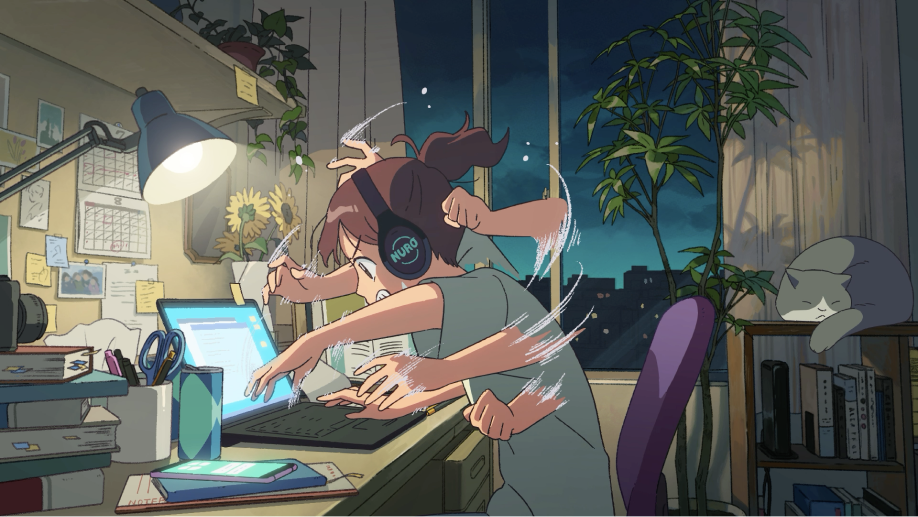
An actual picture of me furiously typing so I can submit this blog post in time
My name is Weiming – and alongside Sally and Long, two of my colleagues, we’ve spent hours mulling over our own experiences, scouring the web for resources, asking colleagues to contribute their own thoughts, experiences and stories, and compiling everything that we’ve thought might be useful to people looking to start their journey in UX/UI Design, here in this article. The motivation behind us spending the time doing this was because we want to help people understand the nuance behind career change, and what life is like as a UX/UI Designer. So why did we feel the need to include this foreword?
Make no mistake, we have a lot to cover in this three-part article. As mentioned above, we’ve searched far and wide to find what we believe to be a wide range of opinions, stories, resources and thoughts. But, that doesn’t mean we’ve covered everything. And, it doesn’t mean that you should take what we’ve written as gospel. You’re about to dive into a lot of words, and we know that different people process and take in information in different ways. So, take your time, come back to it as many times as you may need, and if all goes well, you may even see the content in here change and grow as time goes on.
Ultimately, if we can help even one person in their understanding of the UX/UI Design field, how they can gain more experience, or kickstart a career transition, then I think we’ve done the job we all came here to do – but we don’t want to leave it at that. If you’ve read some, or all of the article, and want to continue the conversation somewhere, please don’t hesitate to reach out to any of us on LinkedIn. We’d be more than happy to chat about any of the topics listed in this article series.Let us not distract you from what you came here for any further! Happy reading – and hoping to hear from you soon.
– Sally, Long & Weiming
Is UX/UI Design right for me?
Do you love solving problems and working with a team to go from ambiguity to clarity? Does the thought of designing experiences that have a tangible impact on people’s lives excite you? Are you looking for a career in which you’ll always be learning and it’s okay to ask a million questions? Then you may just be in the right place and UX/UI design might be the perfect career for you. And, as UX/UI designers ourselves, our aim for this guide is to give you some real life guidance about how to get your foot in the door of this increasingly popular field.
We’ll be releasing a series of articles regarding starting your UX/UI Designer Career in 2023, and in this first part, we’ll be going through what a career in UX/UI Design actually looks like, and the current industry demand for UX/UI Designers. If you read this article, and are still interested in pursuing a career in UX/UI Design, stay tuned for parts two and three of this series, where we’ll cover how to start your learning journey, and also advice for going about your job search!
What does a UX/UI Designer actually do?
So what is UX/UI design and what exactly does a UX/UI designer do? You may have come across this famous (or should we say infamous) UI vs. UX Ketchup meme, which seems to be a convenient way to explain the apparent difference between user interface and user experience design. The assumption is that UI designers are all about making things look aesthetically pleasing, whereas UX designers are focused on making things intuitive and easy to use.
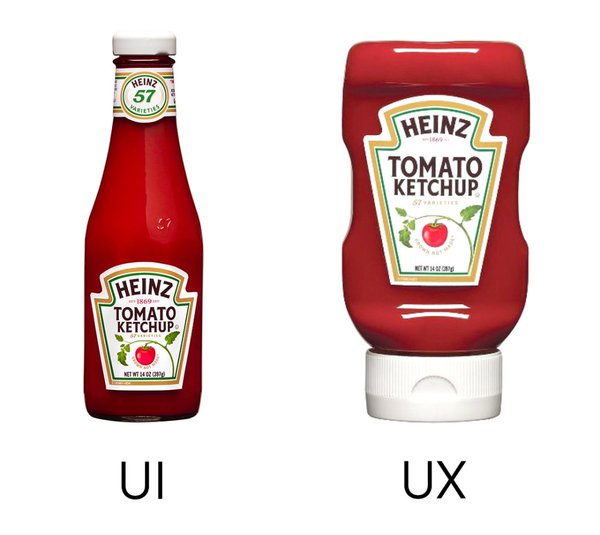
In line with this you’ll find that some companies separate UX designer and UI designer roles, with the UX team focused more on user research (think lots of customer surveys, user interviews, user testing) and the UI team (aka the Figma wizards) purely focused on taking the findings that the UX team produce, to design the details of the high fidelity interfaces.
The problem with this distinction is that an aesthetically pleasing product isn’t always user-friendly (e.g. it might look creative and intriguing but have really poor accessibility) and may not allow users to easily achieve their goals. On the other hand, we know many successful products e.g. Amazon, which seems to be wanting in the user interface department, but performs incredibly well.
That’s why you’ll also find companies hiring for UX/UI designers, who are comfortable with both interacting with customers to understand the real human problem, and also taking those very observations to create delightful experiences that are tailored to solving key pain points for those very customers, rather than simply designing to impress.
That is, a UX/UI designer creates usable, desirable and effective solutions using human-centred design methods. As a designer, you will work on the end to end human-centred design process – from initial exploration and discovery of the key customer problems to journey mapping, wireframing, prototyping, testing, iteration and handover of your beautiful, pleasurable high fidelity solutions to your team of software engineers.
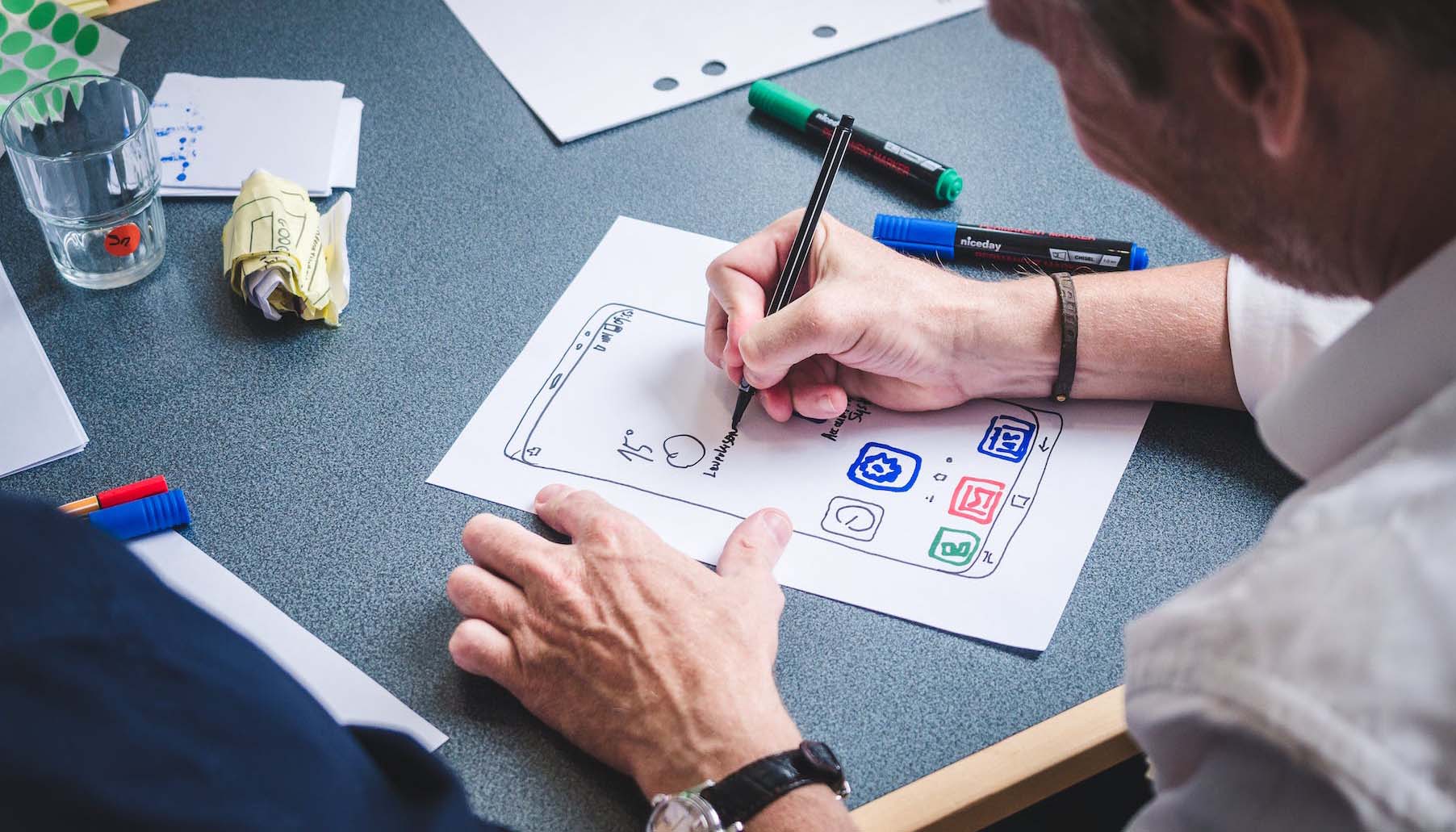
What a day in the life of a UX/UI Designer is really like
Now that you’ve gained a bit of an insight into the world of UX/UI Design, and what designers do, let’s talk about what you can expect to be doing, day-by-day, as a UX/UI Designer.
In these situations, YouTube can be both your best and worst friend; if you’ve been following this topic for a while, then you might already be familiar with the wealth of “A day in the life of a UX/UI Designer” videos on the platform. But the context for each of these videos can be wildly different, and completely blow out expectations of what a day in the life of a designer can be like.
Before diving into these, here’s some insight from Weiming Sun, an Associate Designer who started with Mantel Group in March 2022, as part of the traineeship program.
“I want to mention that probably the truest answer to the question of “what does a day in the life of a UX/UI Designer look like?” is that… it depends. Honestly, it does depend, and on so many different things as well. The country you live in, the company you work with (if you work with a company at all), the project(s) you work on… each of these factors will determine what a day in your life as a UX/UI Designer will look like.
“For myself, as an Associate Designer at Mantel Group, life looks pretty fine, and often quite busy. There are perhaps a few different levels of this, split into non-negotiables, negotiables, and… indulgences, for a lack of a better word.
“The non-negotiables include; a daily scrum call, which allows me to keep in touch with the developers working on my project, some alone time, free of distractions where I can actually get my head down and do some designing, and communication between myself and the other designer on my project – whether through video calls or slack messages.

Finding time in my day to design is actually more difficult than you might imagine.
“What forms the negotiables? A morning coffee with a colleague or two, or a kitchen conversation here and there – some of the benefits of being in the office. Alternatively, if I’m working from home, I might unplug from work over lunch and browse YouTube for a little bit, catching up on tech or sport news. Watching YouTube videos of other people eating while I eat is also strangely therapeutic.
“This brings us to the indulgences – and these don’t happen every day, but when they do, they feel super well-deserved. Someone might bring in a selection of pastries that they’ve grabbed earlier on in the day for the team to share, or I might listen in and absorb some of my colleagues’ conversations about the work they’re doing, or think about my own career goals, learnings, and opportunities for personal and professional growth. I might even spend some time unpacking my experiences, and putting them into a blog post! So meta.”
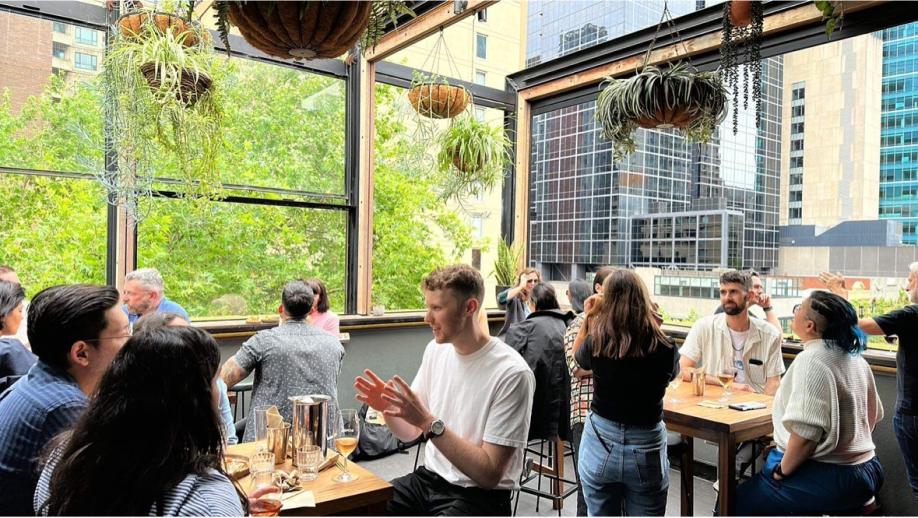
A recent indulgence – hanging out with some Melbourne-based Mantels at Bomba, as part of a team connectedness day.
“What I can definitely say, though, is that I’ve found a place that feels like home to me, is fun to be in and around, and affords me a loose day/schedule that works for me. As someone who’s always felt like they have a short attention span, the context switching and breadth of work you get to do in a consultancy such as Mantel allows me to keep my mind busy, and if I’m feeling mentally blocked on one thing, I can put that down, and shift my focus to something else.
“This is a quite balanced representation of my average day, or week – I want to try and bring a perspective to what I’m presenting to you. Plenty of “Day in the life” YouTube videos will show you what I believe to be a quite glamourised view of a designer’s life. I’m not saying that’s unattainable – it definitely exists out there. But it’s representative of only a portion of peoples’ experiences, and what works for me, I don’t expect to work for everyone that reads this article.
When I asked a fellow Mantel Group designer for her views on life as a designer, she offered this comment:
“Having worked at in-house, agency and consultancy now, I would say the biggest advantage of working at a consultancy is that we get more hands-on opportunities on projects than you would at an agency. When compared with working in-house, we are not tied to working endlessly on the same product for the duration of employment. As individuals, we get to have broader exposure to different industries and clients.
“From my perspective, having recently passed the six month mark on my time at Mantel, this quote definitely rings true – even if I might not have lived through all those experiences. Being involved in the company and the day-to-day of things within the company, I know these opportunities exist to get hands-on with more projects, or as I mentioned earlier, be exposed to different kinds of work from different industries.
“In the spirit of presenting a balanced perspective, I’ve used my network to talk to some fellow designers, who have agreed to help bring you a little insight into what daily life looks like at other places outside Mantel Group.
“I’ve managed to gather two other experiences for you – one is from another consultancy, while the other works in-house.”
Examples
Emily is an Associate Designer at Quantium, a tech product company, in Sydney, Australia. She describes her day-to-day work as being “mostly filled with UI designing” – though that is a reflection of the stage at which her project is at, as opposed to the norm. She’ll usually start the week with a designer huddle, which will determine her team’s direction of work for the week. From there, she’s got a degree of freedom regarding which direction to take her work in – though she’s always in communication with the rest of her team. She’s mostly working from home, so she’s on a fair few online calls with the developers in her team, making sure the team is aligned on what’s being built, and cleaning up anything that’s been missed.
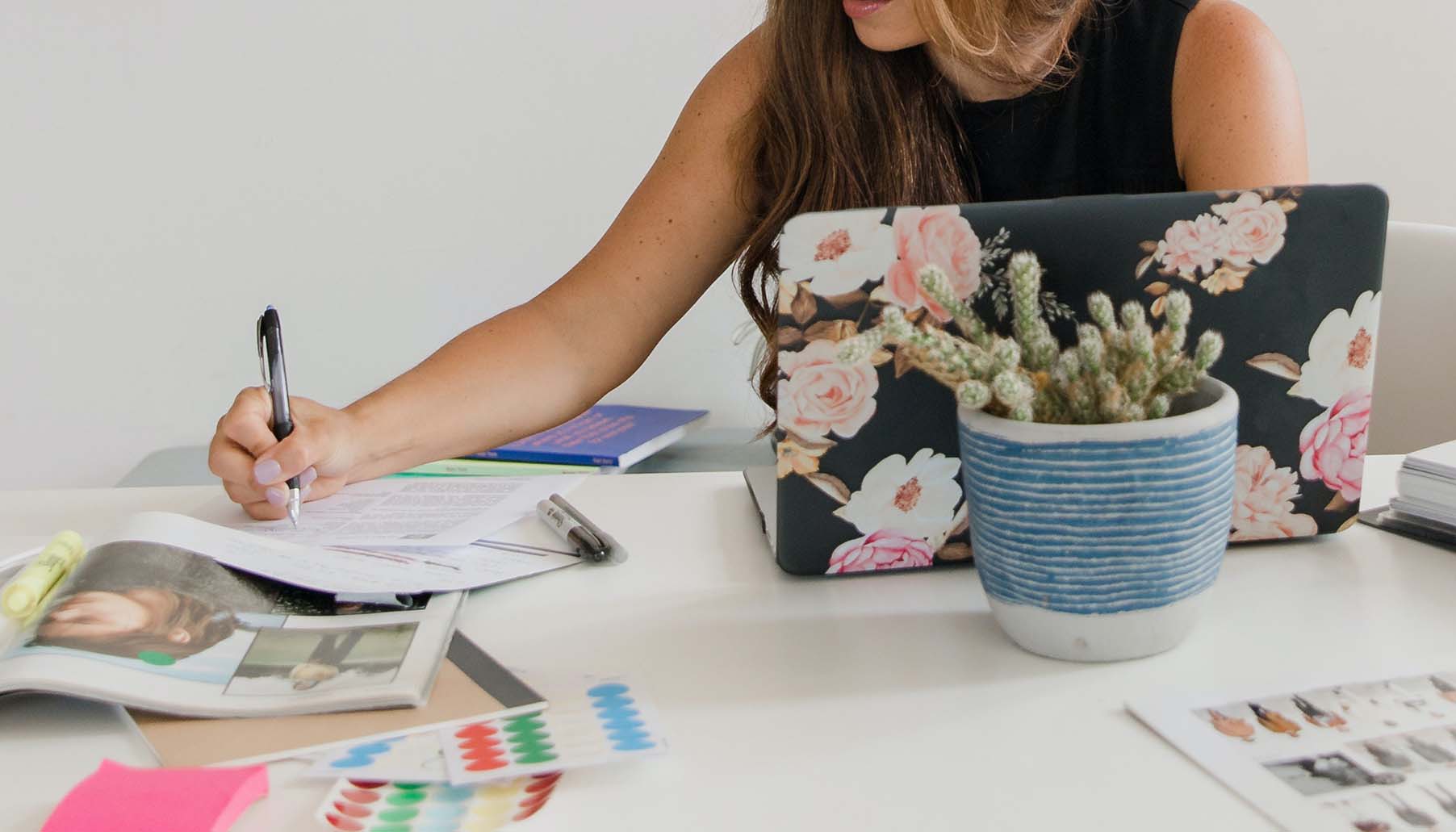
Nobuto is a Product Designer at carsales. He describes his current day-to-day life as “being quite UI-focused”. “I’ve… ended up being the owner of the app, which is quite good… but a lot of work! Today was one of those days, just full of meetings – it’s so hard to find time to get your head down and do some designing.” Within the design team, there are workshop sessions every few days, where all the designers get together, present what they’ve been working on, and anything they’ve been struggling with, and will workshop it together as a team.
He’s not in the office that frequently either – the carsales team is fully remote, so there’s no obligation to head into the city. When he does, however, he describes the snacks in the office as “dangerous” – something Weiming can relate to. When it comes to work distribution, he feels the structure is quite hands off – not only does he have a high level overview of what direction his project is going, but he’s also clued into the asana board, where items are sometimes allocated to him, and which he will work on.

Now, back to Weiming: “I know these insights are quite Australia-focused – at the end of the day, these are our lived experiences, and we expect most of our readers to come from Australia as well. There are a lot of videos on YouTube that cover the experiences of our friends across the pond in the US – and if you’re interested in understanding what day-to-days may look like in other locations, I’d encourage you to reach out to people living and working there! In the meantime, here are a selection of videos you can watch as well, if that suits you more.”
What are the current industry demands/conditions for UX/UI designers?
So. We’ve covered an intro into the world of UX/UI Design, and also what a day in the life of a designer can look like. But what about on the company side? If it’s not your first time looking up whether to make the career pivot, then you’ll know there are a depth of bootcamps, resources, guides, YouTube videos, Linkedin short courses, Medium articles… The list really does go on. Make no mistake, the pivot into UX/UI design is a popular one at this point in time.
But what about on the demand side of the equation? What is the UX/UI Design job market like, specifically for prospective career changers, and what does that mean for you? Weiming is back to provide some insight in this field as well – he started with Mantel Group in March 2022, as part of our traineeship program.
“A bit of context before we begin – I took a General Assembly bootcamp in March of 2021, which finished in May that same year. I don’t think anyone needs reminders of what followed – Melbourne’s long lockdown really threw a curveball at my job search, and honestly it was a bit of a struggle to keep up. It’s difficult enough to be on the search, with all the vulnerability that comes with putting yourself out there and getting rejected, but to also be stuck at home at the same time meant even if you took a break from job hunting, you were never far away from it.
“While lockdowns might have furthered digital transformation and enabled certain sectors to grow exponentially, my personal experience was that confidence didn’t spread through to all parts of the UX/UI Design job market. Uncertainty only really breeds uncertainty – but now that we’re through the thick of it, demand certainly seems to be back.
“Something that is a reflection of the global market, though, is a lack of positions on the junior side of the scale. A quick browse through LinkedIn and you’ll immediately see that most positions will be calling for at least a year or two’s experience. Figma is definitely the platform to know in the UX/UI Design industry going forward, and you’ll usually see it mentioned in job listings, though what other requirements you’ll see will depend on where you’re applying.
“A piece of advice here – Apply, even if you don’t have all the skills or the same amount of experience as listed in the job description. Believe in yourself, the skills you have, and what you can bring to a team. The worst thing that could happen is that you will never hear anything back, and you won’t get the job – but that’s exactly what would have happened if you didn’t throw your hat into the ring anyways!”

Applying for jobs is frequently draining, and facing down rejection after rejection can take its toll on you. Don’t forget to be kind to yourself!
Before we move onto our next segment, there’s one final point that Weiming wants to make:
“The situation I mentioned previously about there being a lack of entry-level/junior positions, combined with the fact that bootcamps and career changes are very popular these days, means that the demand for designers/supply of designers can sometimes be a bit imbalanced, with the situation on the junior end of the scale being that there’s usually a far larger supply of designers than demand for them. This can seem super daunting, as if you’ll never be able to break into the industry – but if you’re invested in your journey, and you’re clear about your goal, in time, you’ll find the right opportunity for you to grasp with both hands, and it’ll just go on from there.
“Make no mistake though, it may be a difficult process, so make sure you have the right mindset going into the job search, and keep a good support network around you. If you’re reading this, and feeling like you might be in a similar situation, reach out to me (Weiming), and we can find some time to talk it over. You’re not alone!”

You’re never in it alone, and there’s always someone out there who’s had a similar experience to you. Reach out when you feel you need it!
Weiming has provided his personal opinion on what the outlook for designers is, going into 2023 – but we’ve also found this great article from Academy Xi, detailing their own outlook for the industry going forward.
Where to next?
Now that you’ve heard what it really means to be a UX/UI Designer and what the day-to-day life of a UX/UI designer looks like in Australia, it’s time to start thinking about how you want to go about your learning journey in UX/UI Design. In the next instalment of this series, we’ll be outlining some of the different ways you can pursue your learning journey to enter the field and we’ll also take you through some real examples of different pathways that the team here at Mantel Group took. If you think this might be the career for you, stay tuned for some more honest and practical guidance.
Written by Sally Kim, Vu Long Tran and Weiming Sun